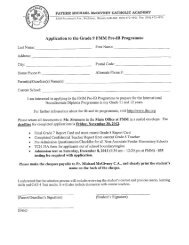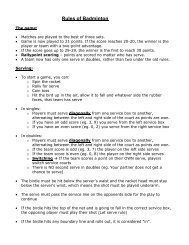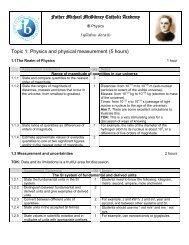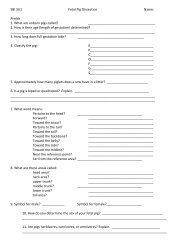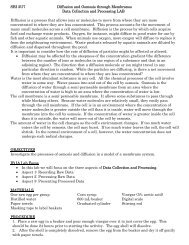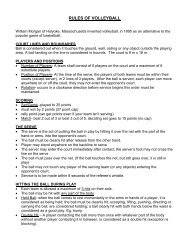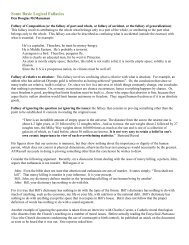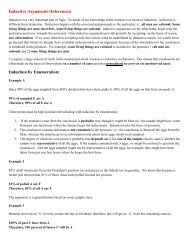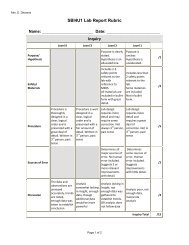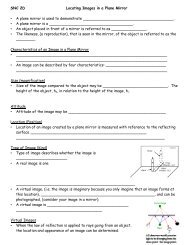IB COMMAND TERMS
IB COMMAND TERMS
IB COMMAND TERMS
You also want an ePaper? Increase the reach of your titles
YUMPU automatically turns print PDFs into web optimized ePapers that Google loves.
<strong>IB</strong> <strong>COMMAND</strong> <strong>TERMS</strong><br />
These command terms indicate the depth of treatment required for a given assessment statement. These command<br />
terms will be used in examination questions, so it is important that students are familiar with the following definitions.<br />
Objective 1<br />
Define<br />
Give the precise meaning of a word, phrase or physical quantity.<br />
Draw<br />
Label<br />
List<br />
Measure<br />
State<br />
Objective 2<br />
Annotate<br />
Represent by means of pencil lines.<br />
Add labels to a diagram.<br />
Give a sequence of names or other brief answers with no explanation.<br />
Find a value for a quantity.<br />
Give a specific name, value or other brief answer without explanation or calculation.<br />
Add brief notes to a diagram or graph.<br />
Apply<br />
Calculate<br />
Describe<br />
Distinguish<br />
Estimate<br />
Identify<br />
Outline<br />
Objective 3<br />
Analyse<br />
Use an idea, equation, principle, theory or law in a new situation.<br />
Find a numerical answer showing the relevant stages in the working (unless instructed not to do<br />
so).<br />
Give a detailed account.<br />
Give the differences between two or more different items.<br />
Find an approximate value for an unknown quantity.<br />
Find an answer from a given number of possibilities.<br />
Give a brief account or summary.<br />
Interpret data to reach conclusions.<br />
Comment<br />
Compare<br />
Construct<br />
Give a judgment based on a given statement or result of a calculation.<br />
Give an account of similarities and differences between two (or more) items, referring to both<br />
(all) of them throughout.<br />
Represent or develop in graphical form.
Deduce<br />
Derive<br />
Design<br />
Determine<br />
Discuss<br />
Evaluate<br />
Explain<br />
Predict<br />
Show<br />
Sketch<br />
Solve<br />
Suggest<br />
Reach a conclusion from the information given.<br />
Manipulate a mathematical relationship(s) to give a new equation or relationship.<br />
Produce a plan, simulation or model.<br />
Find the only possible answer.<br />
Give an account including, where possible, a range of arguments for and against the relative<br />
importance of various factors, or comparisons of alternative hypotheses.<br />
Assess the implications and limitations.<br />
Give a detailed account of causes, reasons or mechanisms.<br />
Give an expected result.<br />
Give the steps in a calculation or derivation.<br />
Represent by means of a graph showing a line and labelled but unscaled axes but with<br />
important features (for example, intercept) clearly indicated.<br />
Obtain an answer using algebraic and/or numerical methods.<br />
Propose a hypothesis or other possible answer.




